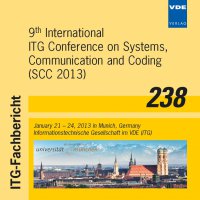Sub-Nyquist Radar
Konferenz: SCC 2013 - 9th International ITG Conference on Systems, Communication and Coding
21.01.2013 - 24.01.2013 in München, Deutschland
Tagungsband: SCC 2013
Seiten: 6Sprache: EnglischTyp: PDF
Persönliche VDE-Mitglieder erhalten auf diesen Artikel 10% Rabatt
Autoren:
Bar-Ilan, Omer; Eldar, Yonina C. (Department of Electrical Engineering, Technion - Israel Institute of Technology, Haifa, Israel)
Inhalt:
We investigate the problem of a monostatic radar transceiver trying to detect Swerling 0 targets, sparsely populated in the radar’s unambiguous time-frequency region. Several past works employ compressed sensing (CS) algorithms to this type of problem in order to achieve recovery resolution surpassing that of classical radar processing, but do not address how the sampling is performed. Other works combine radar and CS in order to reduce the receiver’s sampling rate, but in doing so impose constraints on the radar transmitter. Here, using the Xampling framework, we describe a CS-based recovery method which allows us to recover this sparse target scene from samples taken at the signal’s rate of innovation instead of at its Nyquist rate, which can be an improvement of several orders of magnitude. Xampling allows us reduce the number of samples needed to accurately represent the signal, directly in the analog-to-digital conversion process. These low rate samples retain the crucial signal characteristics which allow us to recover the desired targets. Furthermore, this process is performed solely at the receiver side, so we impose no restrictions on the transmitter. Index Terms — compressed sensing, rate of innovation, radar, sparse recovery, sub-Nyquist sampling, delay-Doppler estimation.


